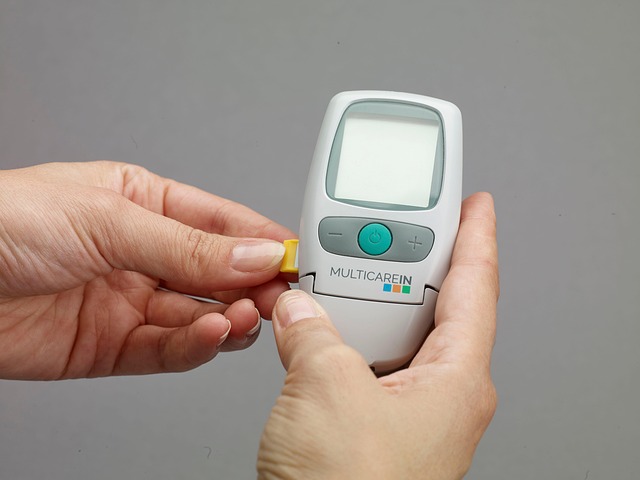Iron deficiency anemia, a common blood disorder caused by low healthy red blood cells, is often undiagnosed in the UK due to subtle symptoms. Early detection through simple blood tests like the UK Vitamin D Blood Test, which assesses red blood cell function and identifies iron deficiencies, is crucial for timely intervention. Key metrics include ferritin and hemoglobin levels, with low ferritin indicating deficiency. A Vitamin D Blood Test is recommended alongside anemia screening, as vitamin D aids in iron absorption. Consulting a healthcare professional helps determine tailored actions for management.
In the UK, iron deficiency anaemia (IDA) is a common health concern. Fortunately, blood tests play a pivotal role in both diagnosing and managing IDA. This comprehensive guide explores understanding IDA, its impact on overall health, and how specific blood tests can accurately identify low iron levels. We’ll delve into interpreting test results and outline effective treatment steps to help you navigate the path to optimal well-being. Remember that early detection through a simple UK Vitamin D Blood Test could be key to reversing IDA’s effects.
- Understanding Iron Deficiency Anemia and Its Impact
- The Role of Blood Tests in Diagnosis
- Interpreting Results and Next Steps for Treatment
Understanding Iron Deficiency Anemia and Its Impact
Iron deficiency anemia is a common blood disorder that occurs when your body doesn’t have enough healthy red blood cells to carry adequate oxygen to your body’s tissues. This condition can be caused by various factors, including iron-deficient diet, blood loss, or impaired absorption of iron. In the UK, it’s not uncommon, with many cases going undiagnosed due to subtle symptoms. A key indicator is fatigue, but other signs may include pale skin, shortness of breath, dizziness, and headaches. If left untreated, it can lead to more severe health issues, emphasizing the importance of early detection through simple blood tests.
A UK Vitamin D Blood Test, for instance, while primarily assessing vitamin D levels, can also reveal iron deficiency anemia. Red blood cells require adequate iron to function properly, and low iron levels often indicate underlying anemias. Healthcare professionals may recommend this test as part of a comprehensive health check or if there are suspicions of nutritional deficiencies, ensuring timely intervention and management.
The Role of Blood Tests in Diagnosis
In diagnosing iron deficiency anemia, blood tests play a pivotal role by providing crucial insights into the health of your red blood cells and overall hemoglobin levels. These tests are essential tools for healthcare professionals in the UK to determine if there’s an iron deficiency. A common approach involves analyzing a sample of your blood to check for the presence of specific indicators. One key metric is the level of ferritin, a protein that stores iron in the body; low ferritin levels often suggest iron deficiency. Another vital measure is hemoglobin, which carries oxygen throughout your bloodstream; its measurement can indicate if red blood cells are underdeveloped or reduced in number due to anemia.
Additionally, complete blood counts (CBCs) are frequently employed to assess the overall health of your blood. This comprehensive test counts different types of blood cells, including red blood cells, and can reveal anomalies indicative of iron deficiency anemia. Moreover, some tests specifically focus on Vitamin D levels, as inadequate Vitamin D can impact iron absorption. In the UK, where Vitamin D deficiency is prevalent, especially during winter months, a Vitamin D blood test may be included in anemia assessments to ensure a thorough diagnosis and tailored treatment plan.
Interpreting Results and Next Steps for Treatment
Interpreting your results is a crucial step in understanding your iron deficiency anemia and planning treatment. If your test indicates low levels of iron or hemoglobin, it suggests that you may have anemia. This could be due to various factors, including dietary deficiencies, blood loss, or underlying medical conditions. In the UK, a Vitamin D Blood Test is often recommended alongside anemia testing as vitamin D plays a role in iron absorption.
Once you have your results, the next step is to consult with a healthcare professional who can help determine the best course of action. Treatment options typically include dietary changes to increase iron intake, such as incorporating more iron-rich foods into your diet. In some cases, supplements may be prescribed, and for more severe cases, further tests might be needed to identify and address the underlying cause.
Iron deficiency anaemia is a common yet treatable condition, and blood tests play a crucial role in its diagnosis. By understanding the impact of iron deficiency and interpreting blood test results accurately, healthcare professionals in the UK can provide effective treatment, such as vitamin D supplements alongside dietary changes, to alleviate symptoms and improve overall health.
